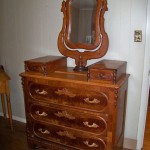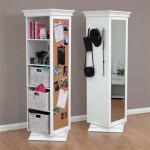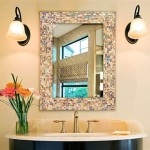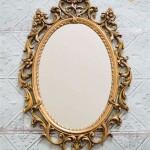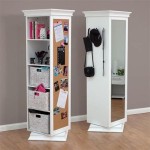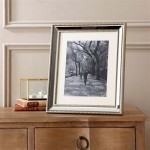Two-Way Mirrors in Changing Rooms: Understanding the Technology, Legality, and Privacy Concerns
The use of two-way mirrors, also known as one-way mirrors or observation mirrors, in changing rooms raises significant privacy concerns. These mirrors, when installed and lit correctly, allow individuals on one side to observe those on the other without the observed individuals being aware of the surveillance. Understanding the technology behind these mirrors, the legal frameworks governing their use, and the potential implications for individual privacy is crucial for both businesses and consumers.
Two-way mirrors function based on the principle of partial reflection. A standard mirror reflects nearly all incident light. A two-way mirror, however, is coated with a thin layer of metallic material, typically silver or aluminum, allowing some light to pass through while reflecting the remainder. When the observation side is significantly darker than the changing room side, the mirror reflects enough light to function as a normal mirror for individuals inside the changing room. However, enough light also transmits through the mirror to allow observation from the darker side. The difference in lighting is crucial for the mirror to function as intended.
The manufacturing process of two-way mirrors involves carefully controlling the thickness of the metallic coating. This delicate balance dictates the ratio of light reflected to light transmitted. Too thick a coating results in a standard mirror, while too thin a coating compromises the reflective properties, making the observation too obvious. Specialized manufacturers produce these mirrors with specific applications in mind, including security surveillance, research, and theatrical settings.
While two-way mirrors have legitimate applications, their potential misuse in changing rooms raises serious ethical and legal considerations. Many jurisdictions have laws specifically addressing the use of surveillance devices in areas where individuals have a reasonable expectation of privacy, including changing rooms. These laws often prohibit the installation of two-way mirrors or require explicit signage informing individuals of their presence.
The legality of using two-way mirrors in changing rooms varies significantly depending on the jurisdiction. Some jurisdictions explicitly ban their usage, while others have more nuanced regulations focusing on disclosure and consent. Retailers and other businesses operating changing rooms must thoroughly research and comply with local laws to avoid legal ramifications. Failure to adhere to these regulations can result in significant fines, legal action, and reputational damage.
Identifying a two-way mirror can be challenging, but a few methods can help determine if a mirror is truly two-way. One common technique is the "fingernail test." When pressing a fingernail against a regular mirror, a small gap appears between the nail and its reflection due to the glass layer. With a two-way mirror, this gap is often absent or significantly reduced because the reflective coating is applied to the surface. However, this method isn't foolproof, as certain mirror constructions can yield similar results.
A more reliable method involves observing the lighting conditions. If the area behind the suspected two-way mirror appears significantly darker than the changing room, it could indicate a two-way mirror. Attempting to peer through the mirror by cupping one's hands around the edges and reducing surrounding light can also help discern differences in transparency. Finally, observing the surroundings for any unusual fixtures, such as small holes or darkened areas near the mirror, might indicate hidden cameras or observation points.
If an individual suspects a two-way mirror is being used improperly, they should report their concerns to the business management and, if necessary, to the local authorities. Documenting the location and any supporting evidence can be crucial in investigations. Consumer protection agencies and privacy advocacy groups can also provide guidance and support in such situations.
Businesses considering using mirrors for security purposes in areas near changing rooms should prioritize transparency and adhere to all applicable regulations. Clearly informing customers about any surveillance measures, including the use of cameras or observation mirrors, helps build trust and avoids potential misunderstandings. Employing alternative security measures, such as visible cameras, can also offer a more transparent and less intrusive approach to security.
Technological advancements continue to blur the lines between observation and privacy. New technologies, such as see-through displays and advanced camera systems, pose similar challenges to traditional two-way mirrors. Staying informed about these developments and advocating for clear legal frameworks regarding surveillance technologies is essential for protecting individual privacy in an increasingly technologically driven world.
The issue of two-way mirrors in changing rooms underscores the ongoing tension between security and privacy. Understanding the technology, legal landscape, and individual rights related to surveillance is vital for both businesses and consumers. Open communication, clear regulations, and responsible technological implementation are crucial for navigating these complex issues and safeguarding individual privacy.

Woman S Tiktok Exposes Terrifying Bathroom Feature

This Is Super Creepy I Know Will Always Check My Dressing Room Mirrors Two Way Mirror The More You Fun Facts

Women Safety Difference Between Mirror And 2 Way Glass

Be Aware Of The Mirrors Ladies Top 2 Way Glass Bottom Mirror When We Visit Toilets Bathrooms Hotel Rooms Changing Two Helpful Hints

Women Safety Difference Between Mirror And 2 Way Glass

Marty S Fiber Musings No Space Leave The Place

How To Tell If A Mirror Is Two Way Or Not Quora

No Space Leave This Place Finger Test Won T Always Tell The Difference Between Real And Two Way Mirrors Check

How To Tell If A Mirror Is Two Way Or Not 8 Steps With Pictures

Two Way Glass Image Mirror Just Conduct This Simple Test Place The Tip Of Your Fingernail Against R A Guide To Deduction Handy Dandy

